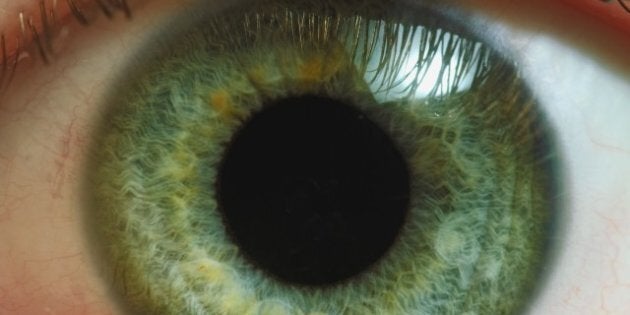
At one time or another we've either displayed or been the recipient of what is commonly known as a "look that could kill." This ocular display reveals the obvious displeasure and contempt associated with watching, hearing or feeling something that is distasteful and can be powerful enough to deter or even eliminate the direction of an interaction.
Still, that's nothing compared to what an angry eye can do to germs.
The eye is a complex organ and has developed a unique means to fight off germs. Unlike the rest of the body, which utilizes the immune system to fight off intruders, the eye has its own separate immune function to tackle a potential infection. This phenomenon, called immune privilege is actually a defense mechanism to protect the eye against not only bacteria and viruses, but also to keep the rest of the immune system from interfering in the normal action of vision.
This is actually a good thing considering the nasty symptoms that the immune system could cause such as large amounts of mucus production and even unrequited cell damage similar to what happens during flesh eating disease.
Scientists have been fascinated by this concept of immune privilege and have gone in search of the specific mechanisms that the eye uses to stay safe without using the entire body's defense mechanisms. What they found was a group of incredibly small but effective proteins whose sole intent is to seek out bacteria and kill them on the spot. These antimicrobial peptides (AMPs) were first described several decades earlier although their importance wasn't realized until the 1990s when they were found to help prevent eye infections.
Research has since learned exactly how these peptides went about killing their enemies although the results are better placed in a Clive Barker novel. AMPs manifest the well-known concept of death by a million paper cuts. Each little peptide interacts with the surface of the cell and either pokes a hole in it or slices it, causing the inside of the cell to leak out; the microbial victim essentially "bleeds" to death.
Not surprisingly, in an era where antibiotic resistance has become rampant the interest in these little killers for antimicrobial therapies is significant although there is some hesitation. AMPs may be evilly effective against a certain number of organisms but they are unable to kill a wide array of pathogens making them less attractive than their antibiotic counterparts. The manufacture of AMPs is also at present very costly and in today's health care economics, AMPs simply may be too expensive to use.
But recently, a group out of the University of California, Berkeley led by Dr. Suzanne Fleiszig have unveiled a new, less expensive kind of AMP derived from keratin protein. Keratin is a protein that can be found on skin, in hair, and in nails and has been manufactured en masse primarily for the cosmetic industry. Fleiszig and her team found that a form of keratin known as cytokeratin 6A was produced in high numbers in the cornea and that a number of smaller peptides based on the same protein structure were also found. These smaller peptides were then tested against bacteria and the results were fantastic. Not only were these AMPs effective against known AMP victims, but these had an even wider range of kill including gastrointestinal bacteria, something that had rarely been seen earlier.
The results from Fleiszig's group suggest that AMPs have a bright future ahead. As the post-antibiotic era slowly comes to fruition there is every indication to suggest that AMPs will take their place. While cost may have been an issue in the past, these keratin-based discoveries offer a cheaper option that can be quickly manufactured for submission into clinical trials in a matter of years. Within a decade, there will undoubtedly be a new series of AMP-based medications in drug aisles featuring catchy names to increase interest and overall sales. While marketing execs will find some jargon-sounding name to promote their merchandise, I personally believe that the name should be kept simple reflect the origin and ultimate function of these AMPs.
Besides, who could resist something called The Evil Eye?